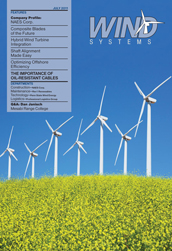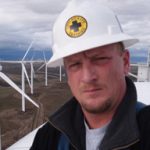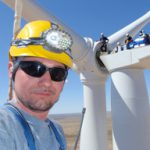Tell us how this program came into being.
It all began about four years ago, when there was a legislative appropriation here in Minnesota that provided seed money for the program. We decided that we wanted to lay a foundation for a wind technology program that would be among the best in the country. We reached out to other colleges that already had wind programs in place such as Iowa Lakes Community College, who were very generous in providing input as we began developing our curriculum. But we wanted to make sure that we were teaching our students what their future employers would need them to know, so we approached major wind companies such as Clipper Windpower to get their point of view, and they’ve become a major supporter of our efforts. Not only did its executive management agree to sit on our educational advisory board, helping us to shape our curriculum and update it along the way, but the company has also donated $300,000 worth of equipment for our wind lab. We also received PI System software as a gift from OSIsoft, which allows us to manage real-time data and events and is valued at about $225,000.
Other industry supporters include Minnesota Power, the Duluth Seaway Port Authority, LHB Engineering, Iron Range Resources, The Minnesota Center for Engineering & Manufacturing Excellence, B&K Trucking, Vic’s Crane and Heavy Haul, Hytorc, Skidmore-Wilhelm, NRG, and Atmospheric Systems Corp., from which we purchased a sodar unit with a grant we’d applied for. In total we have received well over $1 million in value from support and donations.
We have received guidance from the American Wind Energy Association since the inception of the program. The team worked with AWEA’s Education Working Group to compile a list of job skills that are critical for a good technician to have. I’m now a member of its education working group in order to make sure that we are meeting the needs of the industry and to help keep our curriculum fresh. We’ll be applying for AWEA’s Seal of Approval this summer, as we have met the final requirement of graduating our first class of students this spring. So what we ended up with is a 72-credit AAS degree that takes two years to complete and is fairly rigorous. We want to produce employees that are highly qualified for the wealth of entry-level jobs that are out there, and we just graduated our first class of students. Clipper has already hired one of them, in fact.
Describe the student’s coursework, and the hands-on experience they receive.
We have open enrollment since this is a state college, and students take a placement test to gauge their strengths and weaknesses, but no one is turned away. We also make clear that there are a wide variety of jobs out there, and that you don’t necessarily have to be able to climb a tower to take advantage of them. The wind industry is big enough now that there are many different professional avenues a person can take, whether that involves manufacturing or repairing and servicing equipment on the ground.
Once they’ve been accepted into the program the students begin with the Introduction to Wind Energy course, and that same semester they take a class called Field Training and Project Operations, which focuses on the construction side of things and the actual responsibilities a wind technician would have. Then, after some general education classes such as Physical Science and Technical Writing they go into electronics hot and heavy in the second semester, studying subjects such as Digital Electronics, DC/AC Electronics and Electricity, and Electrical Safety. We close out that semester with OSHA 10 and Wind Turbine Safety, Wind Cranes and Rigging, and Tower Rescue. Students are then required to complete a six-credit Wind Energy Technology Internship, and although we help them polish their resumes and give them some job-interview coaching, they’ve got to land these internships themselves.
Both Clipper Windpower and Minnesota Power have taken on our interns, along with other wind-related entities, and it’s really exciting to see the students come back to class so energized from the experience. The remaining semesters are filled with courses like Programmable Logic Controllers, Industrial Motor Control, Wind Turbine Instrumentation and Communication, Wind Turbine Mechanical Systems, Composite Repair, Power Generation and Distribution, and more. Beyond the classroom students have ongoing opportunities to gain hands-on experience by taking trips to Minnesota Power to learn about the grid, to the nearby Taconite Ridge Wind Farm that’s operated by Clipper Windpower, and they will also be responsible for operating the Vestas V27 turbine we’ve purchased that will be installed soon. We’re also integrated with the college’s Process Automation Systems Program, so we have programmable logic controllers, or PLCs, in our wind lab as well.
So we feel that we have the relationships, equipment, and curriculum in place to help provide the wind industry with the well-trained employees they require, and that will give the students themselves the opportunity to get involved in this growing and dynamic field.
To learn more: Call (218) 744-7512, e-mail d.janisch@mr.mnscu.edu, or go to www.mr.mnscu.edu.








































